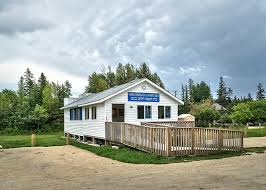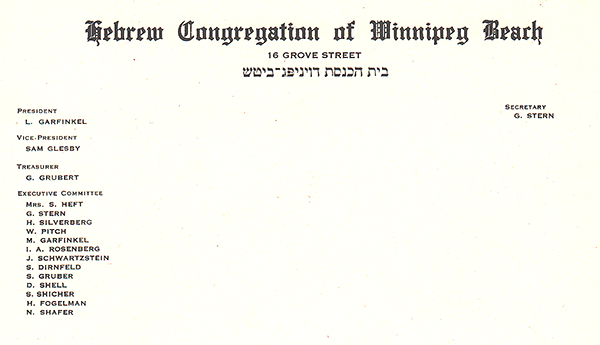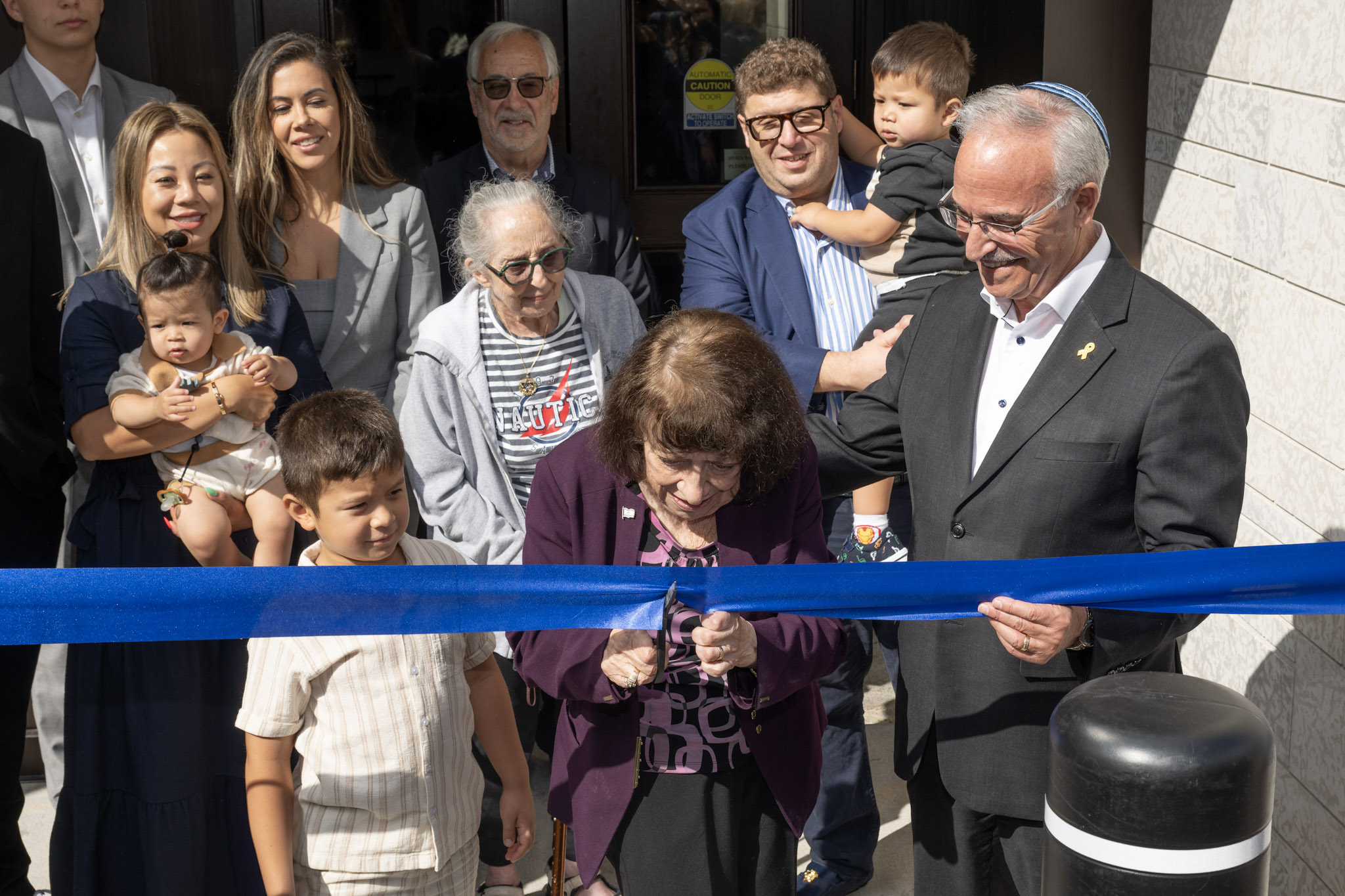Local News
“Narrow Bridge” offers wonderful lesson in understanding the struggles individuals go through in grappling with questions of identity – in an often quite humorous fashion
Review by BERNIE BELLAN
Is it possible to produce a play that tackles the tremendous pressure any individual deciding to undergo a gender transformation must feel in a way that is both fascinating, yet very amusing? Add to that pressure yet more pressure though when not only is that individual changing their gender, they’re also becoming increasingly drawn to an orthodox form of their religion.
Such is the storyline of Winnipeg Jewish Theatre’s newest production, “Narrow Bridge,” written by Winnipeg playwright Daniel Thau-Eleff – on now at the Berney Theatre in the Asper Campus until March 19.
Although I was somewhat familiar with the background to this particular play (having followed its long development process and the many twists and turns it took until it was finally mounted this year), watching “Narrow Bridge” in a preview performance on Thursday, March 9, left me thinking that the work that had gone into honing “Narrow Bridge” from simply an idea for a story that began 10 years ago into a play that is at once riveting, amusing, and highly educational has been well worth it.
The play opens with the protagonist, played by Elio Zarillo, who is identified as “Sholem” in the playbill, explaining to the audience that – at this point in their life, they are a woman whose name is “Samantha” (or “Shoshana” in Hebrew). (And, despite the antagonism exhibited by so many conservatives to the use of “they” as a pronoun in place of “he” or “she”, while watching this play it is totally apparent why a non-specific pronoun is perfectly appropriate for non-binary individuals. Still, don’t be mistaken into thinking “Narrow Bridge” is some sort of didactic lesson in gender politics. Far from it.)
Samantha is soon joined on stage by sister Naomi, played by Alissa Watson, and mother Elaine, played by Rhea Ekler. Naomi announces that is she going to be married in six weeks to her boyfriend, Kevin, who is about to convert to Judaism. The dialogue in the opening scene is fast paced and often quite humorous.
Soon enough the action moves to a local Orthodox synagogue, where we are introduced to “Mendel,” played by WJT veteran Harry Nelken. If ever there was a perfect fit for a local actor to play an Orthodox Jewish scholar, Harry Nelken is it. Not only does he look every bit the part of an older Orthodox Jew, when he offers dissertations on the Talmud, which he does from time to time through the First Act, he is absolutely convincing as a scholar.
Moreover, as much as one might expect that expositions on certain parts of the Talmud might be somewhat dry – to say the least, Thau-Eleff clearly has a deep understanding both of the Talmud and Jewish history. There is a recurrent reference to the “Sanhedrin” (which, as is explained in the play, was the Jewish high court in the time of the Temple) in “Narrow Bridge”, and although I myself grew up learning about the Sanhedrin, having attended Jewish day school, Mendel’s explanation of how the Sanhedrin worked is quite illuminating.
Samantha’s increasing fascination with the Talmud, strange as it may seem in our modern-day world, is given great credibility by the back and forth dialogue between Samantha and Mendel. Samantha puts her quest for wanting to know more about Judaism in the form of one succinct question to Mendel, that sums up much of what this play is about: “What does it mean to be Jewish?”
Does it help though to have a familiarity with the Talmud and Jewish rituals, such as which occur during Shaabat on Friday evenings in observant Jewish homes, in order to fully understand what is going on in “Narrow Bridge?” I’m honestly not sure. I would rather expect, however, that any audience member who is interested in learning about what would motivate someone who is not Orthodox to begin with to want to become Orthodox, regardless of that audience member’s own background, would find much of what “Narrow Bridge” has to offer quite moving.
As the play develops, a good part of the First Act is taken up with Naomi’s upcoming wedding – and Samantha’s clear reluctance to play a major role in that wedding, notwithstanding Naomi’s request that Samantha be her maid of honor.
Again, there are plenty of clever exchanges between characters – with many pithy observations brought forward. At one point prior to the wedding, when tempers are running high, Naomi says to Samantha – in reaction to something their mother has just said: “There is one thing you have to understand about Jewish families. Everything is a matter of life and death!”
The First Act ends with the actual wedding. Suffice to say it’s not a Hallmark movie wedding.
As we learn more about Samantha’s transformation into Sholem in the Second Act, we also learn more about much of the negativity within the Orthodox Jewish community toward gay, bi, and transgendered Jewish individuals who would still like to remain observant. Thau-Eleff’s treatment of what is a highly contentious subject within the Orthodox world is done though with the utmost sensitivity. There is no condescension in how he depicts Mendel’s refusal to accept Sholem’s gender transformation.
Ultimately, Sholem does find his place within the observant Jewish community – largely thanks to the constant encouragement and support of his mother.
“Narrow Bridge” takes on some very tough subjects – with its recurrent theme being a search for identity – or identities, as the case may be.
Each of the actors handles their role with great sensitivity. Sure, there are many laughs, but there is also a great deal of heartbreak. No doubt a play like “Narrow Bridge” will resonate most deeply with a liberal audience – Jewish or non-Jewish, but it would have a clear meaning for anyone who has either struggled with finding their identity – or watched someone near and dear go though that struggle.
Local News
Thank you to the community from the Chesed Shel Emes

We’re delighted to share a major milestone in our Capital Campaign, “Building on our Tradition.” Launched in November 2018, this campaign aimed to replace our outdated facility with a modern space tailored to our unique needs. Our new building is designed with ritual at its core, featuring ample preparation space, Shomer space, and storage, creating a warm and welcoming environment for our community during times of need.
We’re grateful to the nearly 1,000 generous donors who contributed over $4 million towards our new facility. A $750,000 mortgage will be retired in November 2025, completing this monumental project in just seven years.
We’re also thrilled to announce that our Chesed Shel Emes Endowment Fund has grown tenfold, from $15,000 to $150,000, thanks to you, the Jewish Foundation of Manitoba’s FundMatch program, and Million Dollar Match initiative in 2024. Our fund helps ensure that everyone can have a dignified Jewish funeral regardless of financial need.
As we look to the future, our goal remains to ensure the Chevra Kadisha continues to serve our community for generations to come. Our focus now shifts to replenishing our savings account and growing our JFM Endowment fund.
We’re deeply grateful for your support over the past several years.
It’s our privilege to serve our community with care and compassion.
With sincere appreciation,
Campaign cabinet: Hillel Kravetsky, Gerry Pritchard, Stuart Pudavick,
Jack Solomon, and Rena Boroditsky
Murray S. Greenfield, President
Local News
Winnipeg Beach Synagogue about to celebrate 75th anniversary

By BERNIE BELLAN (July 13) In 1950 a group of cottage owners at Winnipeg Beach took it upon themselves to relocate a one-room schoolhouse that was in the Beausejour area to Winnipeg Beach where it became the beach synagogue at the corner of Hazel and Grove.
There it stayed until 1998 when it was moved to its current location at Camp Massad.
On August 2nd members of the synagogue will be holding a 75th anniversary celebration.

As part of the celebration anyone who is a descendant or relative of any of the original members of the first executive committee (as seen in the photo here) is invited to attend the synagogue that morning.
If you are a relative please contact Abe Borzykowski at wpgbeachshule@shaw.ca or aborzykowski@shaw.ca to let Abe know you might be attending or for more information about the 75th anniversary celebration.
We will soon be publishing a story about the history of the beach synagogue, which is something I’ve been writing about for over 25 years.
Local News
Vickar Family cuts ribbon on new Tova Vickar and Family Childcare Centre

By MYRON LOVE In the words of Larry Vickar, the Shaarey Zedek’s successful Dor V’ Dor Campaign “is not only a renewal of the synagogue but truly a renewal movement of Jewish life in our community.”An integral part of that renewal movement was the creation of a daycare centre within the expanded synagogue. On Monday, June 23, Larry and Tova Vickar cut the ribbon, thereby officially opening the Tova Vickar and Family Childcare Centre in the presence of 100 of their family members, friends and other supporters of the project.
The short program preceding the morning ribbon-cutting began with a continental breakfast followed by a welcome by both Fanny Levy, Shaarey Zedek’s Board President, and Executive Director Dr. Rena Secter Elbaze. In Elbaze’s remarks, she noted that Larry and Tova wanted their family (including son Stephen and family, who flew in from Florida) and friends at the event to celebrate the opening of the Tova Vickar and Family Childcare Centre, “not because of the accolades, but because, as Larry put it, he hopes that their investment in the congregation will inspire others to do the same.”
“When Larry and I spoke about what this gift meant to him and the message he wanted people to take away,” she continued, “I couldn’t help but connect it to the teachings of Reb Zalman Schachter-Shalomi whose book – Age-ing to Sage-ing – changes the whole way we look at the concept of ageing and basing it on our ancestral teachings.”
She explained that his concept of “Sage-ing” is based on three key ideas – Discover your meaning and purpose; accept our mortality and think about the legacy you want to leave.
“Larry spoke about these exact concepts when we met,” she said.
Elbaze also noted the presence of Shaarey Zedek’s newly-arrived senior Rabbi Carnie Rose, former Rabbi Alan Green, and area MLAs Mike Moroz and Carla Compton.
Larry Vickar expressed his great appreciation for all those in attendance. “Tova and I are deeply moved to stand here with you today for this important milestone in our community”, he said. “We are grateful to be surrounded by all of you, the people we care about, our family and friends… you who have touched our lives and played some part in our journey.”
